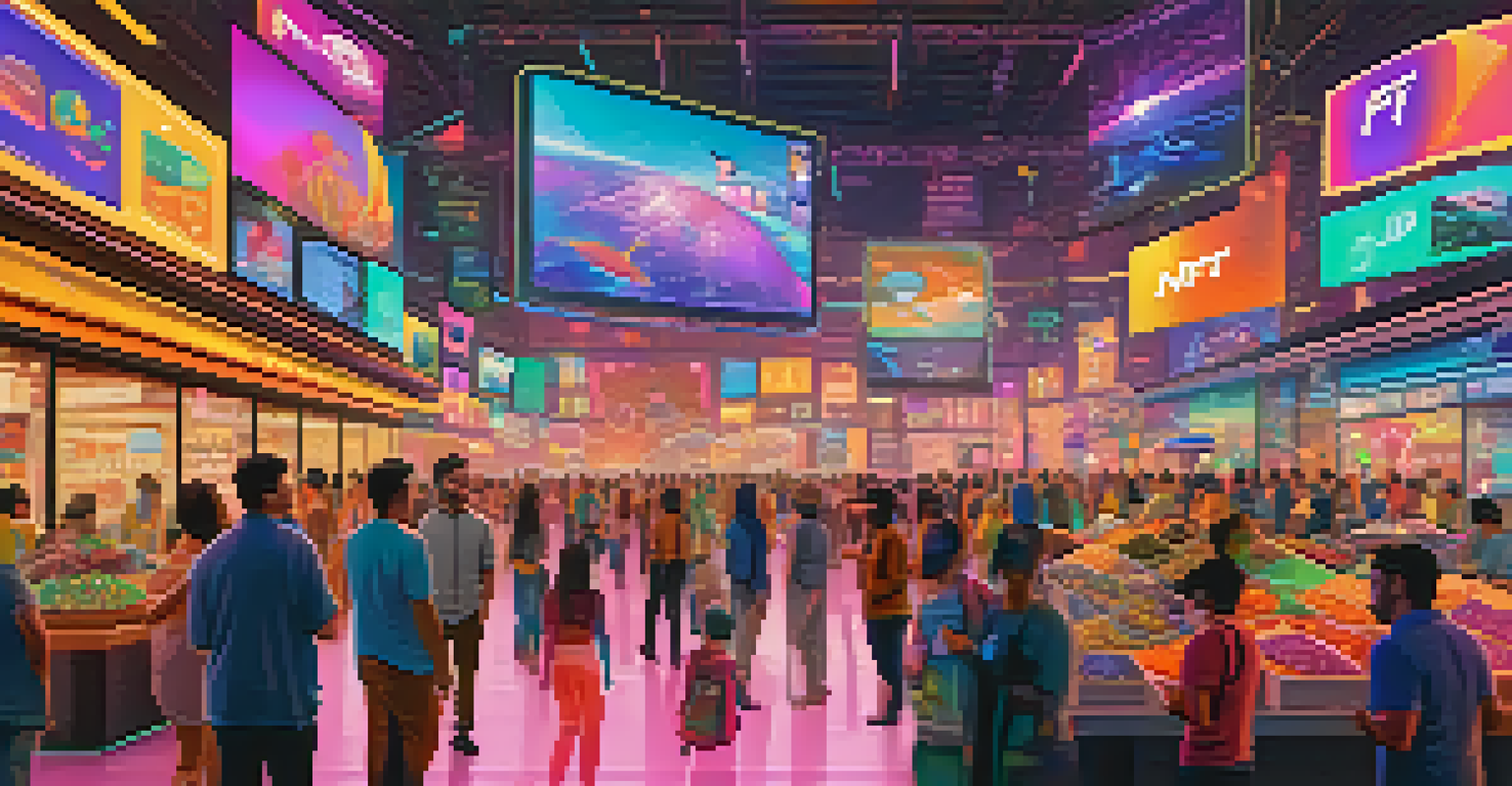Ethereum 2.0's Impact on NFT Market: What to Expect

Understanding Ethereum 2.0 and Its Key Features
Ethereum 2.0, often referred to as Eth2, is a significant upgrade to the Ethereum blockchain. It aims to improve scalability, security, and sustainability. By transitioning from a proof-of-work (PoW) to a proof-of-stake (PoS) consensus mechanism, Ethereum 2.0 is set to enhance overall network performance, which is crucial for NFT transactions.
The future of finance is decentralized, and NFTs will be at the forefront of that revolution.
This upgrade will allow more transactions to be processed simultaneously, reducing congestion and lowering fees. As NFT creators and collectors know, high gas fees can deter participation in the market. Therefore, a more efficient Ethereum network could open the floodgates for new users and projects.
Ultimately, these improvements promise a more robust environment for NFTs, making it easier for artists and collectors to engage in the space without the barriers that existed before.
Lower Transaction Fees: A Game Changer for NFTs
One of the most anticipated changes with Ethereum 2.0 is the reduction in transaction fees, or gas fees. Currently, high gas fees can make minting and trading NFTs prohibitively expensive for many users. By decreasing these costs, more individuals can enter the NFT market, facilitating greater participation and diversity.

Imagine the difference this will make for aspiring artists. With lower fees, they can create and sell their digital art without fearing that transaction costs will eat into their profits. This democratization of access could lead to a richer, more vibrant NFT ecosystem.
Lower Fees Boost NFT Participation
Ethereum 2.0's reduction in gas fees will democratize access to the NFT market, enabling more artists and collectors to engage without financial barriers.
As a result, we may see an influx of new NFT projects and a wider variety of digital assets, reflecting a broader range of artistic expression and creativity.
Enhanced Scalability: Supporting a Growing Market
Scalability has been a critical issue for Ethereum, especially during peak times when network congestion leads to delays. Ethereum 2.0 introduces shard chains, which will distribute the load across multiple chains, allowing for faster and more efficient processing of transactions. This is particularly important for the NFT market, where timely transactions can be crucial.
Blockchain technology has the potential to create a more sustainable and equitable world, and Ethereum 2.0 is a critical step toward that vision.
With sharding, the Ethereum network will be able to handle thousands of transactions per second. This means that during popular NFT drops or auctions, users won’t have to worry about missing out due to network slowdowns. It’s like having multiple checkout lanes open at a busy store, speeding up the entire shopping experience.
As the NFT market continues to grow, this enhanced scalability will not only support existing transactions but also encourage new projects and innovations, ensuring the ecosystem can evolve.
Environmental Impact: A Greener NFT Future
The environmental concerns surrounding blockchain technology, particularly those using PoW, have garnered significant attention. Ethereum 2.0’s shift to PoS reduces energy consumption by over 99%. This change is essential in making NFTs more sustainable and appealing to environmentally conscious users and creators.
Imagine the relief artists will feel knowing their work won’t contribute to excessive carbon footprints. As awareness of climate change grows, many are seeking alternatives that align with their values. Ethereum 2.0’s eco-friendly approach could attract a new wave of artists who previously avoided NFTs due to environmental concerns.
Enhanced Scalability for Transactions
The introduction of shard chains in Ethereum 2.0 will significantly improve transaction processing speed, ensuring users can participate in NFT drops without delays.
In this way, Ethereum 2.0 may redefine not just how NFTs are created and traded, but also who participates in the market, fostering a community that prioritizes sustainability.
Interoperability: Bridging Different NFT Ecosystems
Interoperability is the ability for different systems to work together seamlessly. With Ethereum 2.0, there’s potential for greater interoperability among various NFT platforms. This could lead to more cohesive ecosystems where assets can be easily transferred across different blockchains.
For instance, if an NFT artist creates work on Ethereum, they might want it to be available on other platforms like Binance Smart Chain or Polygon. With improved interoperability, this could become a reality, allowing for a more unified market for NFTs. It’s akin to being able to use your phone on any carrier without restrictions.
This interconnectedness can enhance liquidity in the NFT space, as assets can move freely between platforms, encouraging buyers and sellers to engage more actively.
The Role of Staking in the NFT Market
In Ethereum 2.0, staking plays a vital role, allowing users to earn rewards by participating in the network’s security. This aspect could influence how NFTs are valued and traded. As more people stake their ETH, the supply of available tokens decreases, potentially driving up the value of existing NFTs.
Consider how collectibles appreciate in value; the same principle applies here. If the demand for NFTs increases while the supply of ETH is being locked up for staking, it could create a scarcity effect that benefits NFT holders. Additionally, staking could provide NFT platforms with more resources to develop and innovate.
Eco-Friendly Shift to Proof-of-Stake
Ethereum 2.0's transition to a proof-of-stake mechanism drastically reduces energy consumption, making NFTs more sustainable and appealing to environmentally conscious creators.
This dynamic interplay between staking and NFT valuation may lead to new investment strategies, as users look for ways to maximize their returns in a rapidly evolving market.
Future Trends: What to Expect Post-Ethereum 2.0
As Ethereum 2.0 rolls out, we can expect significant shifts in the NFT landscape. These changes will likely foster innovation, as creators explore new ways to engage audiences and monetize their work. With lower fees, increased scalability, and improved sustainability, the door is wide open for exciting developments.
New use cases for NFTs may emerge, such as fractional ownership or innovative collaborations between artists and brands. We might even see NFTs integrated into virtual reality experiences, creating immersive environments for users to explore and collect digital art.

Ultimately, the future of the NFT market post-Ethereum 2.0 looks bright, with endless possibilities for growth and creativity. It's an exciting time to be involved in this space!